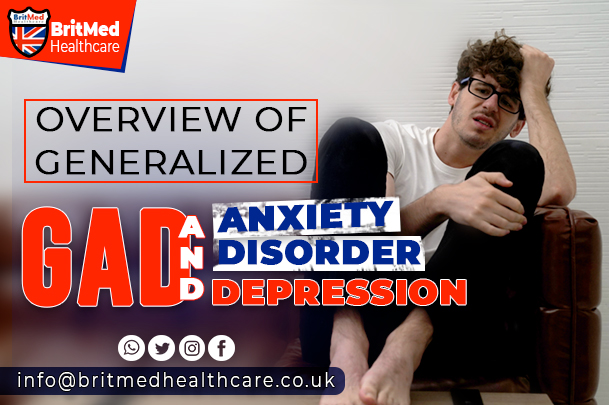Overview of Generalized Anxiety Disorder (GAD) and Depression
Generalized Anxiety Disorder (GAD) and depression are two prevalent mental health conditions that can significantly affect an individual’s daily life. While they often coexist and share some symptoms, they have distinct characteristics and treatment approaches.
Characteristics of Generalized Anxiety Disorder (GAD)
GAD is primarily characterized by excessive worry about various everyday situations, such as work, relationships, health, and finances, even when there is no apparent reason for concern. This chronic anxiety can lead to physical symptoms, including:
– Restlessness
– Irritability
– Muscle tension
– Difficulty concentrating
Individuals with GAD may feel anxious most days and often struggle to recall the last time they felt relaxed.
Characteristics of Depression
In contrast, depression is a mood disorder that affects a person’s thoughts, feelings, and behaviors. Key symptoms of depression include:
– Persistent feelings of sadness, hopelessness, and worthlessness
– Loss of interest in activities once enjoyed
– Changes in appetite and sleep patterns
– Thoughts of suicide or self-harm
Depression can lead to more extreme physical symptoms, such as significant weight changes and chronic pain.
Key Differences Between GAD and Depression
- Primary Symptoms:
– GAD focuses on excessive worry and anxiety.
– Depression centers around feelings of sadness and despair.
- Physical Symptoms:
– GAD often presents with muscle tension and restlessness.
– Depression may lead to more severe physical symptoms, including significant weight fluctuations and aches.
Treatment Approaches
Both GAD and depression can be treated with therapy, medication, or a combination of both, but the specific approaches may differ:
– Cognitive Behavioral Therapy (CBT) is commonly used for GAD, helping individuals manage their anxiety and worry.
– For depression, therapies such as interpersonal therapy (IPT) or psychodynamic therapy may be more effective, as they focus on addressing underlying emotional issues and improving relationships.
Conclusion
Understanding the differences between Generalized Anxiety Disorder and depression is crucial for accurate diagnosis and effective treatment. While both conditions can cause significant distress and impair daily functioning, recognizing their unique symptoms and treatment needs can help individuals and healthcare professionals develop tailored strategies for recovery.
References:
https://www.ncbi.nlm.nih.gov/pmc/articles/PMC8437834/
https://www.ncbi.nlm.nih.gov/books/NBK441870/
https://www.hopkinsmedicine.org/health/conditions-and-diseases/generalized-anxiety-disorder
Websites:
Britmed Healthcare: https://britmedhealthcare.co.uk/
Nightingale Hospital: https://www.nightingalehospital.co.uk/
Top Doctors: https://www.topdoctors.co.uk/doctor/ahmed-el-missiry
You can also book, Contact us on WhatsApp 08009708017




